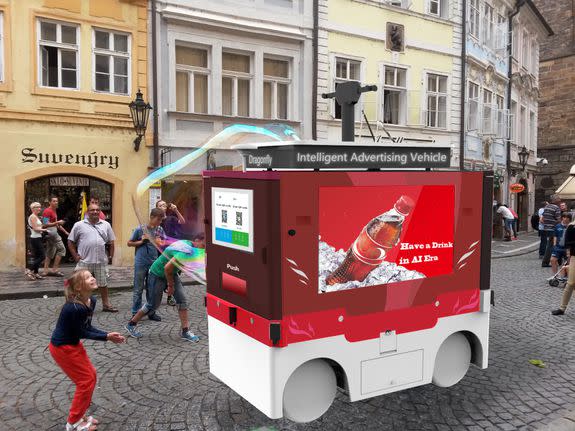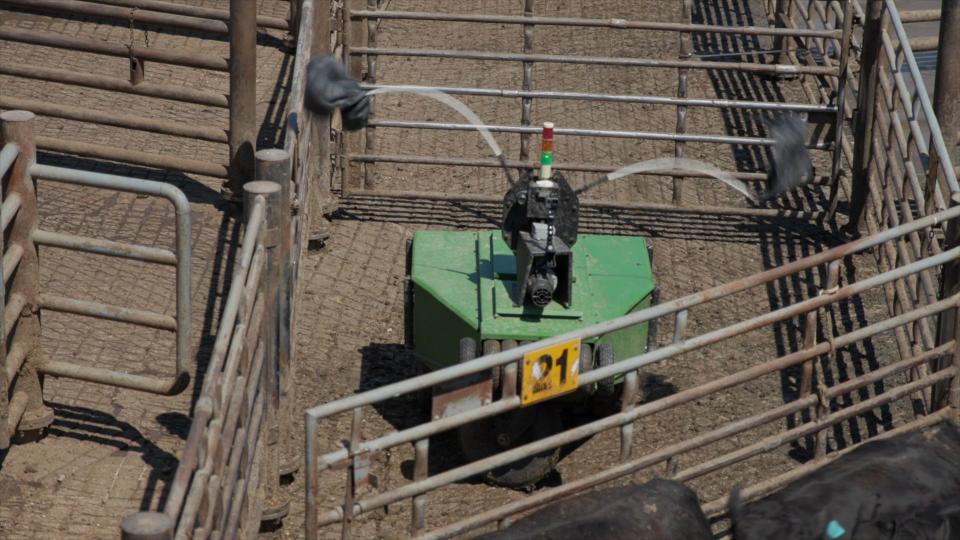This self-driving billboard and vending machine is so dystopian

If San Francisco's robot security guards faced backlash for simply standing around, an autonomous tech company's latest self-driving idea doesn't stand a chance.
This week PerceptIn, a Chinese robotics company with Silicon Valley offices, introduced the DragonFly Intelligent Advertising Vehicle, a self-driving vending machine and mobile advertising unit. It's effectively a robotic billboard that takes your money.
A promo video for the device, above, shows the small robot on wheels flagging down a thirsty runner. You can also hail the robot from your phone to buy food or drinks, or other products that companies want to put on wheels.

Image: perceptin
PerceptIn considers this a new way to grab would-be customers' attention (that isn't on a smartphone, computer, or boring stationary billboard). Apparently in a 15-minute test in a commercial complex, the vehicle caught the attention of 1,000 people. Nearly 60 percent of viewers looked at the autonomous advertisement for more than 5 seconds, which PerceptIn considers a sign of being "highly engaged."
This is something new, different, and pretty strange, so it seems like the novelty factor is contributing to engagement. If these mobile ads start popping up everywhere, it will likely be a similar story to pop-up or banner ads on the web.
The company says the DragonFly is a retail opportunity and will start selling it in the first part of 2019 for $40,000. It's this lowish price compared to other digital billboards (this marketing site says a digital ad starts at around $10,000 for a month depending on the location) and to other self-driving vehicles that the CEO sees as a key selling point. That and its capabilities to collect location-based data showing when and where people are paying attention to the vehicle.
Back to the price, the CEO's got a point. Self-driving vehicles are usually super expensive. The autonomous equipment alone usually starts at around $100,000. But at least those cars can get you somewhere.
WATCH: This robotic cowboy is making cattle herding much safer


 Yahoo Finance
Yahoo Finance 